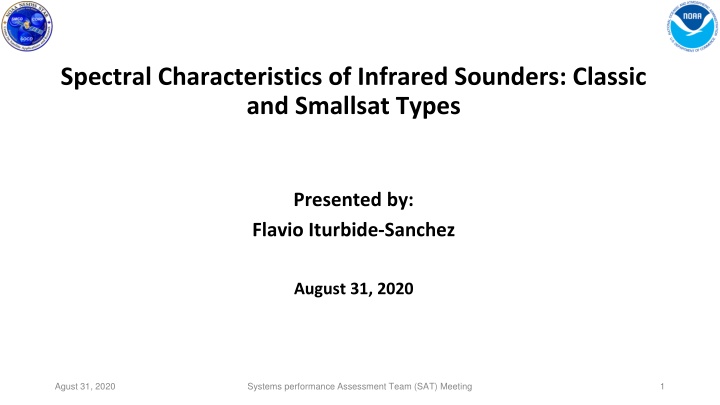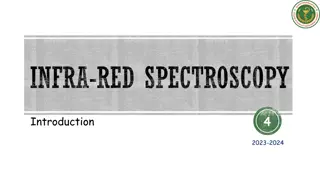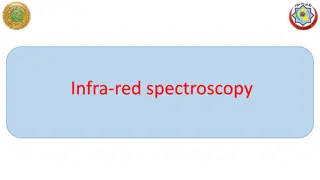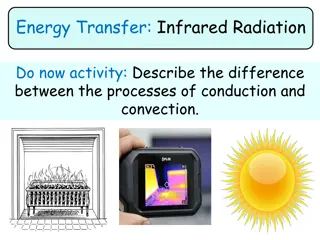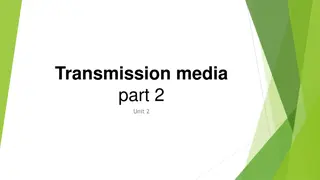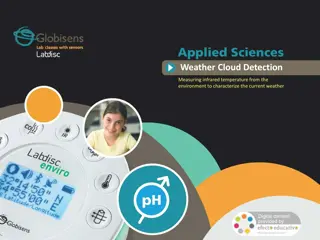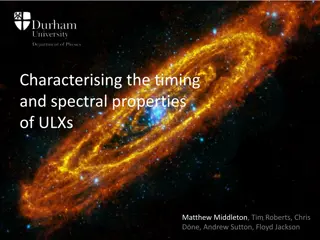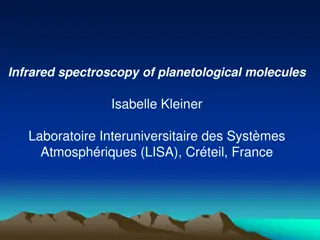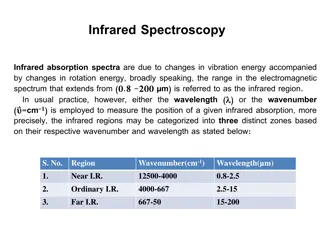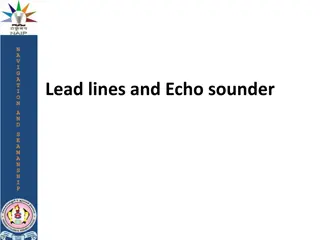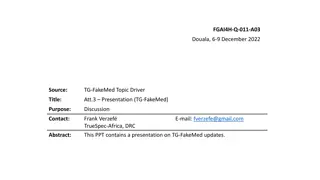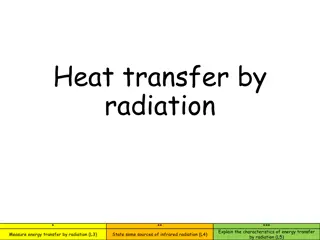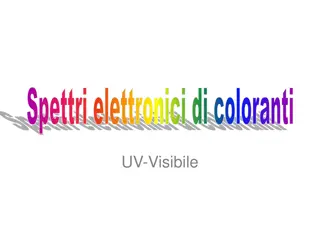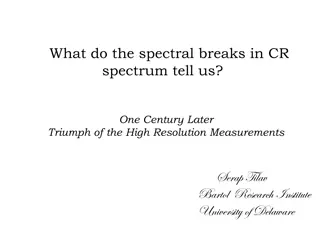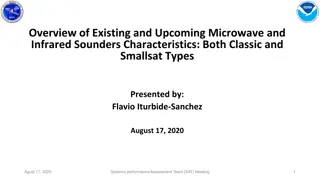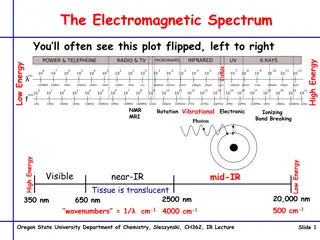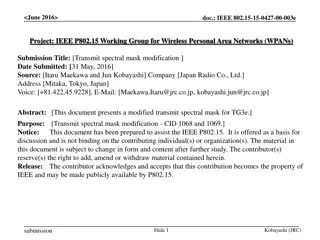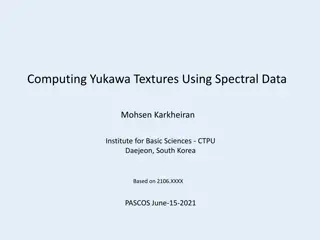Spectral Characteristics of Infrared Sounders: Overview and Comparison
This presentation discusses the spectral characteristics of classic and smallsat types of infrared sounders, focusing on key parameters of LEO hyperspectral IR sounder sensors, spectral coverage, resolution, sampling, as well as the impact of spectral bands on power consumption and volume in smallsatellites. The comparison between IASI-NG and CrIS in terms of spectral characteristics is also detailed, highlighting differences in coverage, resolution, and channels. The importance of improvements in cryo-coolers for smallsatellites is elaborated to enhance power efficiency and reduce instrument size and cost. Presented in a Systems Performance Assessment Team meeting on August 31, 2020.
Download Presentation

Please find below an Image/Link to download the presentation.
The content on the website is provided AS IS for your information and personal use only. It may not be sold, licensed, or shared on other websites without obtaining consent from the author.If you encounter any issues during the download, it is possible that the publisher has removed the file from their server.
You are allowed to download the files provided on this website for personal or commercial use, subject to the condition that they are used lawfully. All files are the property of their respective owners.
The content on the website is provided AS IS for your information and personal use only. It may not be sold, licensed, or shared on other websites without obtaining consent from the author.
E N D
Presentation Transcript
Spectral Characteristics of Infrared Sounders: Classic and Smallsat Types Presented by: Flavio Iturbide-Sanchez August 31, 2020 Agust 31, 2020 Systems performance Assessment Team (SAT) Meeting 1
Key Parameters of LEO Hyperspectral IR Sounders Sensors CRIS IASI Characteristic Spatial IASI-NG AIRS CIRAS CubeSat 6U S-NPP/NOAA-20 0.95m x 0.96m x 0.74m MetOp-A/B/C MetOp-SG EOS Aqua Satellite Platform 30x20x10 cm 2011/2017 2008/2012/2018 2022 2002 N/A Launch Year(s) 14 12 12 13.5 13.5 Nadir Resolution (km) Spectral Interferometer 650-2550 (Spectral Gaps) LWIR (650-1095) Interferometer 640-2700 (No Spectral Gaps) LWIR (640.2-1210) Interferometer 645-2760 (No Spectral Gaps) Grating 649-2673 (Spectral Gaps) LWIR (649-1136) Grating 1950-2450 (No Spectral Gaps) Spectroscopic Method Spectral Range (cm-1) B1-B4 (645-2760) (No spectral Gaps) MWIR (1210-1750) MWIR (1210-2100) MWIR (1212-1612) SWIR (1950-2450) Spectral Bands (cm-1) SWIR (2155-2550) SWIR (2100-2700) SWIR (2169-2673) 2211 8461 16521 2378 625 Number of Channels 0.25 (unapodized) 0.5 (apodized) 0.125 (unapodized) 0.25 (apodized) Spectral Resolution (cm-1) 0.625 (unapodized) 0.55-2.0 1.2-2.0 < 10 (performance) 0.006 -0.001 =SRF full width at half maximum 10 (Requirement) 2 (performance) 1 (best performance) 0.5 (objective) - Spectral Uncertanty (ppm) <1.4% of a FOV Diameter (230 urad) (50% FOV Width = 0.944o = 16476urad) 2.5 Band-to-Band Coregistration - - - - Resources 1.5 6 1.3 0.5/1.2 Data Rate (Mbps) 145 236 360 177 12 Mass (kg) 110 W (SNPP), 102 W (NOAA-20) 210 500 256 25 Average Power (W) Systems performance Assessment Team (SAT) Meeting Temperature/Water Vapor/Trace Gases Vapor/Trace Gases Temperature/Water Temperature/Water Vapor/Trace Gases Temperature/Water Vapor/Trace Gases Temperature/Water Vapor Agust 31, 2020 Geophysical 2 L2+ Products
IASI-NG vs CrIS Spectral Characteristics CO2 H2O H2O CO2 CO NH3 CH4 Spectral coverage: 645 - 2760 cm 1. Spectral resolution: 0.25 cm 1after apodization (0.50 cm-1for IASI/apodized). Spectral sampling: 0.125 cm 1(0.25 cm-1for IASI). IASI-NG L1B (unapodized) O3 HNO3 HNO3 SO2 N2O SO2 Spectral coverage (cm-1) Spectral Resolution (cm-1) Channels IASI_NG CrIS IASI_NG CrIS IASI_NG CrIS 645 - 2760 Without gap 650-1095 1210-1750 2155-2550 0.125 (Unapodized) 0.25 (Apodized) 0.625 (FSR) 16921 2211 (FSR) 1305 (NSR) IASI-NG L1C (unapodized) IASI-NG L1B converted to CrIS EPS-SG STAR Product Requirements Review 3
Spectral Bands vs Power Consumption/Volume Electrical power is more limited in Smallsats. Small satellites require cryo-coolers with high power efficiency, since those elements require significant power consumption. Cryo-coolers and temperature radiators require significant volume. Improvements in volume, mass and power consumption has been observed in new generation of cryo-coolers. Reducing the number of spectral bands could help to reduce the size and power consumption of the cry-cooler system, reducing the instrument volume, power consumption and cost. Agust 31, 2020 Systems performance Assessment Team (SAT) Meeting 4
